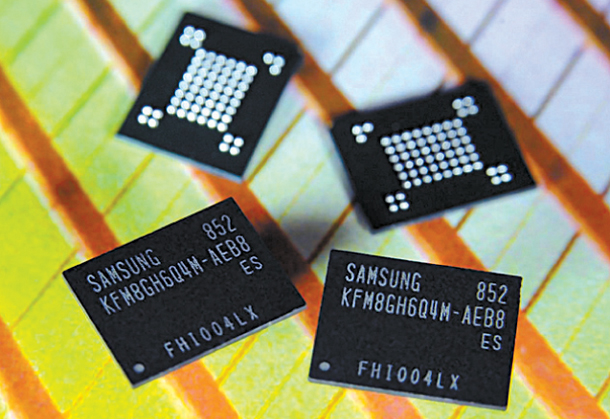The 64-km march for D-RAM
KWON HYUK-JOOThe author is an editorial writer of the JoongAng Ilbo.

When they visited Micron in the United States, they were suspected of technology theft and kicked out as they stared at the factory computer screens. In November 1983, Samsung produced 64K D-RAM with its own technology. After Samsung Electronics acquired Samsung Semiconductor Communication, the company thrived. Its home appliance division, which produced the 40-inch LCD-TV, and its mobile division, which produced popular AnyCall models, did well. But Samsung’s growth owes a lot to semiconductors. After Samsung Electronics made 10 trillion won ($8.9 billion) in net profit in 2004, Japan’s Yomiuri Shimbun reported that Samsung’s profit was more than twice the sum of top 10 Japanese electronics companies, including Sony and Toshiba. Last year, Samsung Electronics became the biggest semiconductor company in the world, ahead of Intel. In the third quarter of this year, it had an operation profit of 17.57 trillion won ($15.7 billion). Foreign agencies often rank it on lists of “respected companies” and “companies to work for.”
An event related to Samsung Electronics’ semiconductor business was held on Thursday to mark the 49th anniversary of the establishment of the company and the 30th anniversary of the merger with Samsung Semiconductor Communication. It certainly deserves celebration. But I am not so delighted about the overall industrial situation in Korea. Samsung Electronics takes up too great a portion of the national economy, and there is no “future Samsung Electronics” in sight. In other words, the Korean economy may shift if Samsung Electronics is shaken. MIT professor Daron Acemglu, author of “Why Nations Fail,” and other scholars advised that Korea needs a few more companies like Samsung Electronics.
So why don’t we have a second, or even third Samsung Electronics? Most of all, business people need to try harder. But it is doubtful they will try. As companies grow, they feel more pressure from the power.
JoongAng Ilbo, Nov. 2, Page 31










with the Korea JoongAng Daily
To write comments, please log in to one of the accounts.
Standards Board Policy (0/250자)